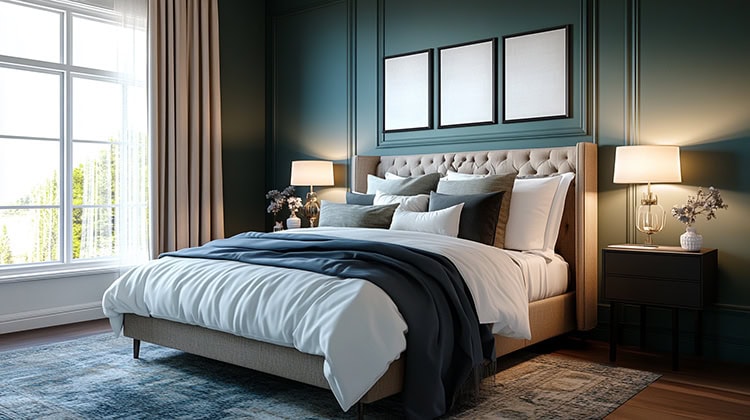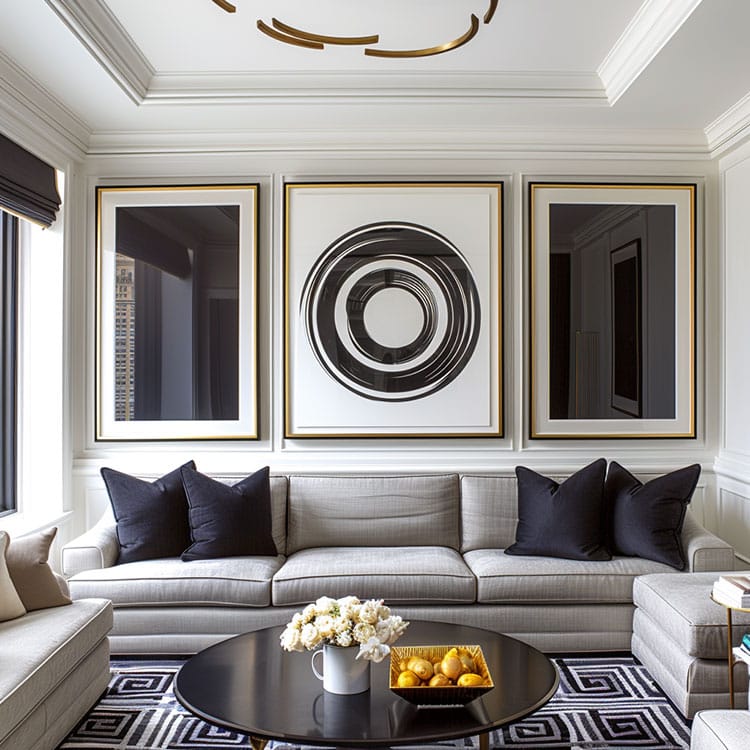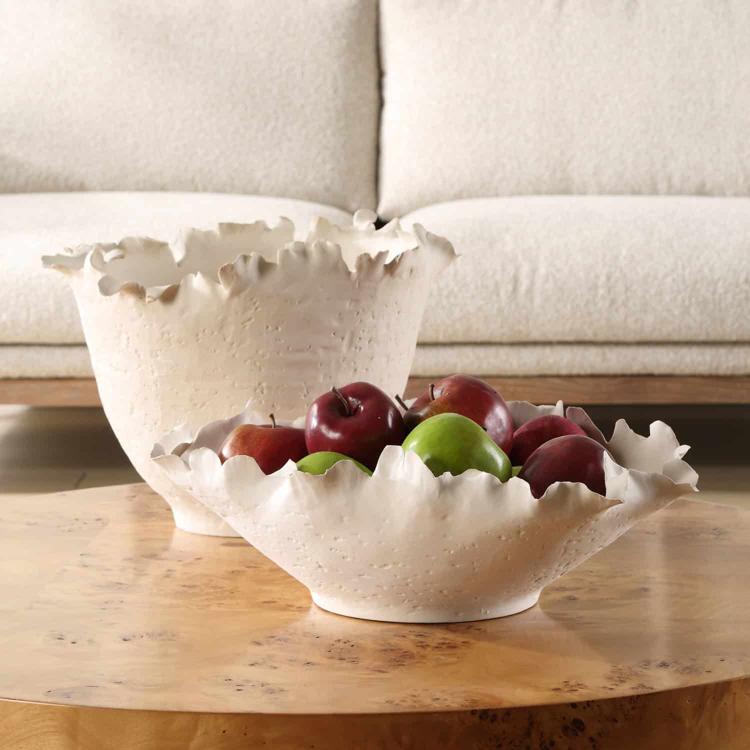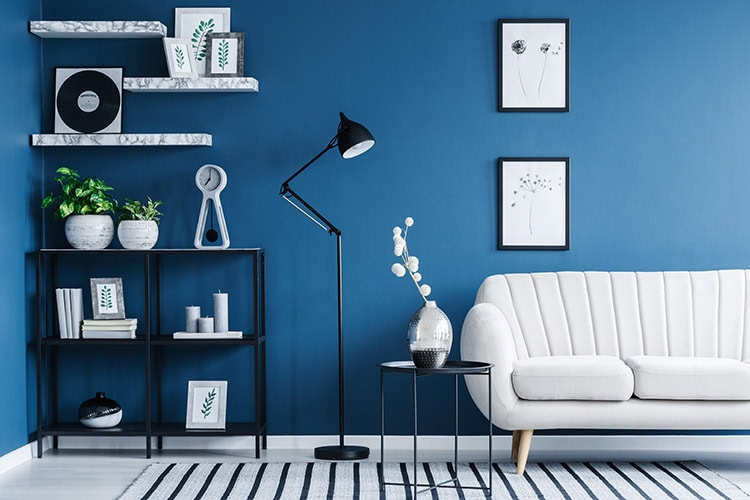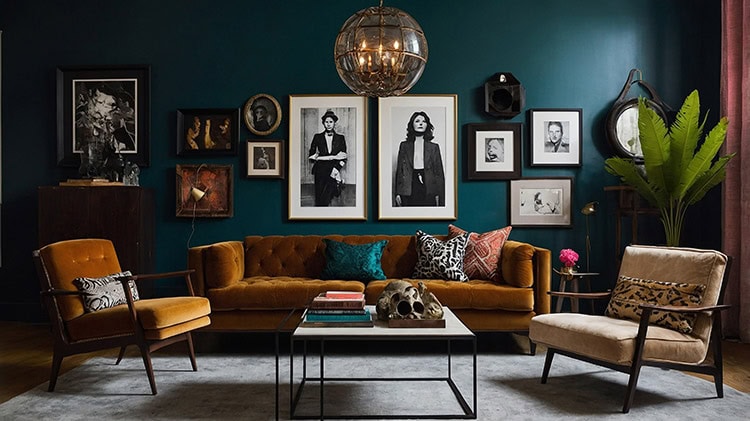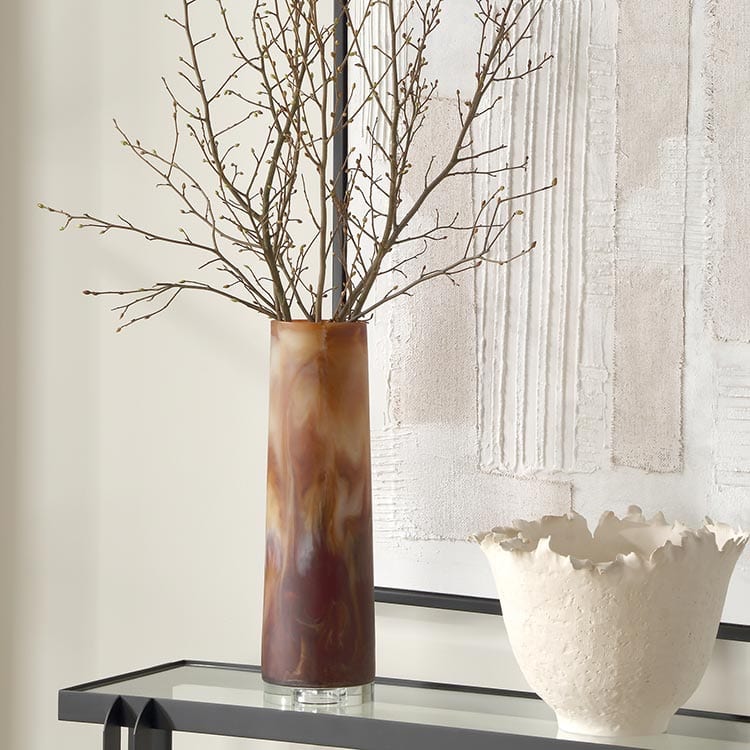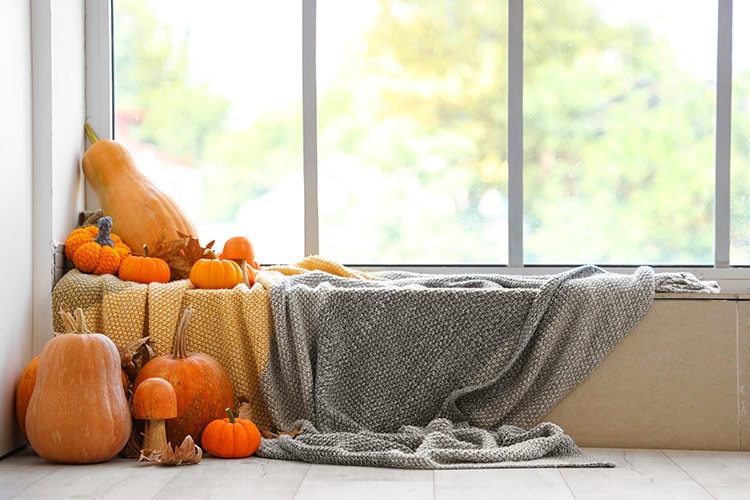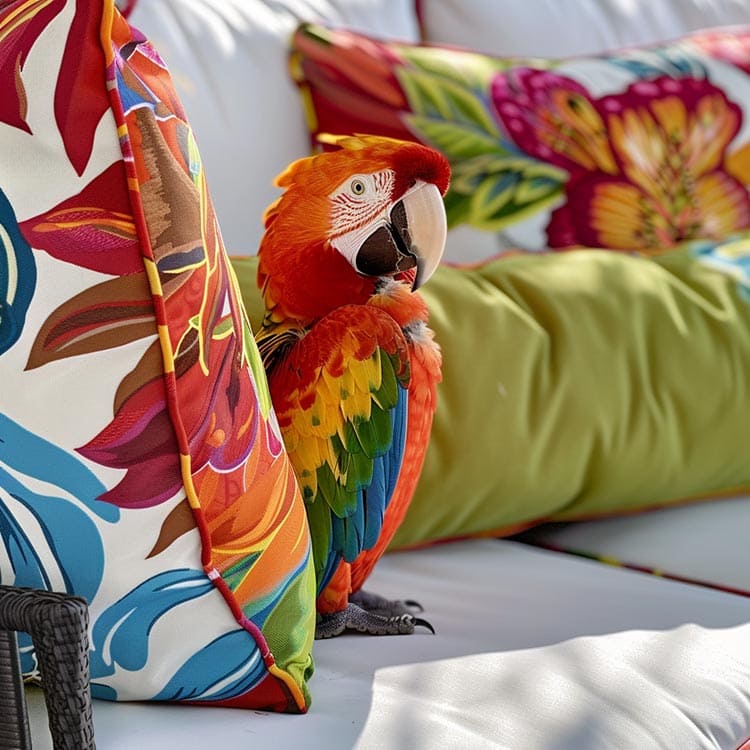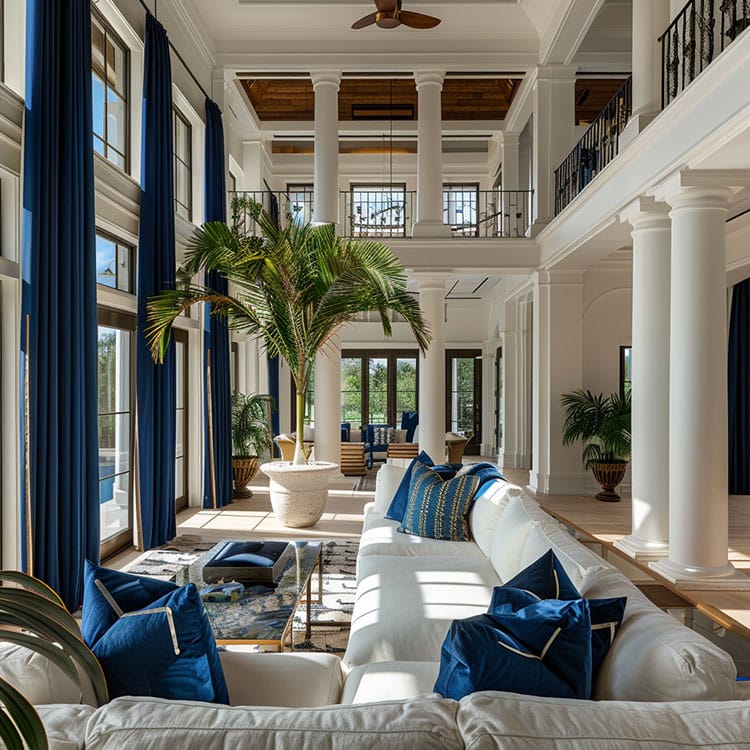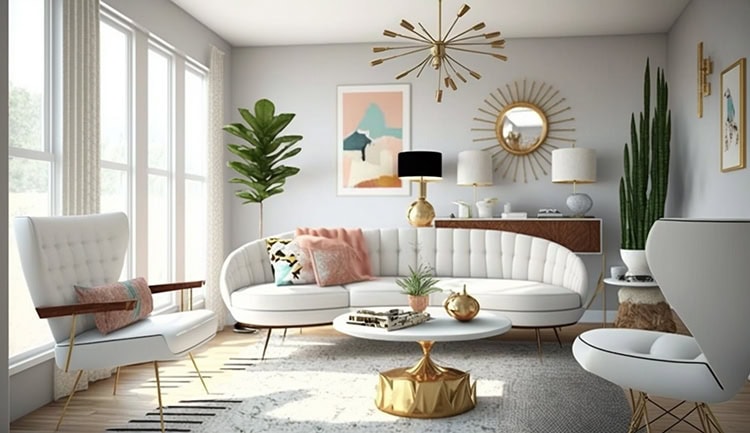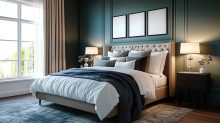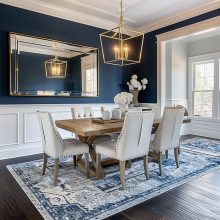Making Patterns Work: A Real-World Guide to Pattern Selection
Let’s face it – choosing patterns can be overwhelming. But here’s the thing: you don’t need a design degree to make great choices. You just need to understand a few key principles and trust your eye.
The Psychology Behind Patterns
Ever walk into a room and instantly feel something? That’s not an accident – patterns play a huge role in how we experience spaces.
 Scale & Impact
Scale & Impact
The scale of a pattern fundamentally shapes how we experience a space. Large patterns create focal points and can anchor a room, while smaller patterns add subtle depth and sophisticated detail, and both are balanced out by versatile medium scale patterns.
- Large patterns create focal points and can anchor a room
- Smaller patterns add subtle depth and sophisticated detail
- Medium-scale patterns offer versatility and balance
- Mixing scales creates visual interest and layered dimension
Pattern Personality Types
Just like people, patterns have distinct personalities. Here’s what they’re really saying:
- Stripes: “I’m put together and I mean business”
- Florals: “I bring the outdoors in and love a good story”
- Geometrics: “I’m confident and current”
- Abstract: “I’m here to shake things up”
- Damask: “I appreciate the classics but I’m not stuck in the past”
- Animal prints: “Why be boring when you can be bold?”
Making Rooms Work
Your room size isn’t a limitation – it’s your starting point for making smart pattern choices.
Small Space Solutions
Vertical stripes create height, while small-to-medium geometrics keep things interesting without overwhelming. Tone-on-tone patterns add sophistication, and patterns with breathing room prevent visual crowding.
However, use caution with huge patterns that get cut off, heavy horizontal stripes (unless you’re trying to make the room feel wider), and overly busy patterns that create visual fatigue.
Working with a cozy space? Lucky you – small rooms are perfect for pattern play, if you know the tricks:
Works Like Magic:
- Vertical stripes (they’re like high heels for your walls)
- Small-to-medium geometrics (they keep things interesting without overwhelming)
- Tone-on-tone patterns (subtle but sophisticated)
- Patterns with breathing room (think scattered rather than packed)
Use Caution with these, especially without experience:
- Huge patterns that get cut off (nobody likes a half-flower)
- Heavy horizontal stripes (unless you’re trying to make the room feel wider and shorter)
- Busy patterns that make your eyes tired (you know the ones)
Living Large
Large spaces can handle dramatic large-scale patterns, complex layered designs, wide horizontal stripes, and statement-making repeats. Avoid tiny patterns that disappear from across the room or lonely small motifs that get lost in the space. Got space to spare? That’s fantastic – but with great space comes great responsibility:
Go For It:
- Those dramatic large-scale patterns you’ve been eyeing
- Complex, layered designs that tell a story
- Wide horizontal stripes that own the room
- Statement-making repeats that need room to shine
Leave these in the dust:
- Tiny patterns that disappear from across the room
- Lonely small motifs that get lost in the space
- Playing it too safe (this is your chance to go big!)
Pattern Matching to Furniture Style
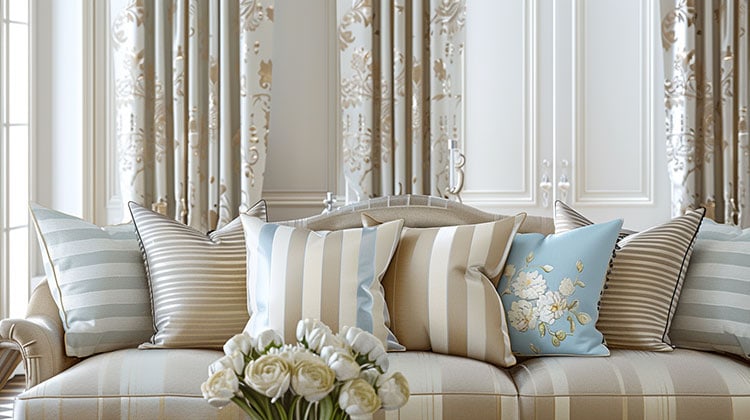
The architecture of your furniture should guide your pattern selection, as certain patterns naturally complement specific furniture styles.
Traditional Furniture
Classical furniture pieces have established pattern partnerships that can be either honored or thoughtfully challenged.
Harmonious Choices:
- Damask and scrollwork
- Classic florals
- Subtle stripes
- Small-scale geometrics
- Traditional toiles
Modern Interpretation:
- Oversized traditional motifs
- Updated colorways of classic patterns
- Deconstructed historic patterns
Modern Furniture
Contemporary pieces offer exciting opportunities for pattern experimentation while still requiring a thoughtful approach to scale and style.
Natural Fits:
- Bold geometrics
- Abstract designs
- Large-scale patterns
- Minimalist motifs
- Graphic prints
Traditional Twist:
- Simplified damasks
- Geometric interpretations of florals
- Updated animal prints
Transitional Furniture
Bridging the gap between traditional and modern, transitional pieces offer unique opportunities for pattern mixing and reinterpretation.
Balanced Options:
- Updated traditional patterns
- Simplified classics
- Mid-scale geometrics
- Organic modern motifs
- Subtle textures
Creating Visual Flow
Patterns should guide the eye through a space in intentional ways, creating harmony rather than visual chaos.
Pattern Direction
The orientation of your pattern can dramatically affect both the furniture piece and the room’s overall impression. While vertical patterns are typically safer if you aren’t experienced, that doesn’t mean horizontal patterns are never good!
Vertical Patterns:
- Elongate furniture pieces
- Draw the eye up
- Create formality
- Work well on tall pieces
Horizontal Patterns:
- Suggest relaxation
- Widen furniture visually
- Great for long pieces
- Create grounding effect
Pattern Movement
How a pattern leads the eye can create either restful stability or energetic movement in your space.
Static Patterns:
- Create stability
- Good for formal spaces
- Help ground busy rooms
- Provide visual rest
Dynamic Patterns:
- Add energy
- Create focal points
- Guide eye movement
- Enhance room flow
Pattern Mixing Mastery 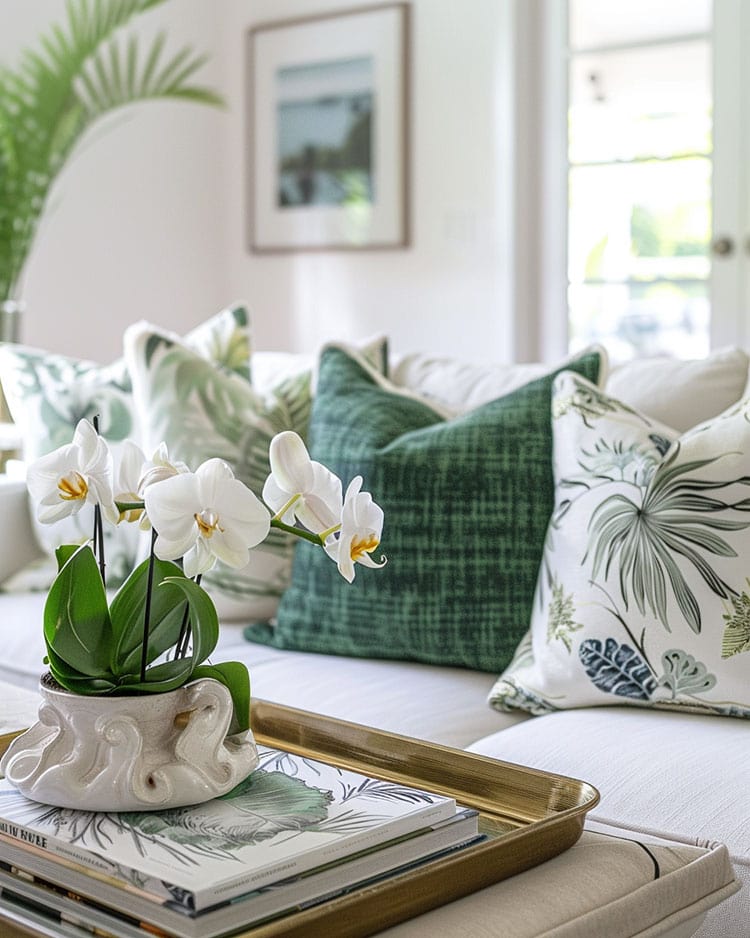
Successfully combining multiple patterns is an art that relies on understanding proportion, scale, and visual weight.
The Rule of Three
This foundational principle helps create balanced and interesting pattern combinations that feel intentional rather than chaotic.
- Dominant Pattern (60%):
- Largest scale
- Sets the tone
- Often the most complex
- Secondary Pattern (30%):
- Medium scale
- Complements dominant pattern
- Simpler design
- Accent Pattern (10%):
- Smallest scale
- Can be boldest
- Adds punch
Successful Combinations
Certain pattern groupings have stood the test of time while leaving room for creative interpretation.
Classic Mix:
- Floral + Stripe + Small geometric
- Plaid + Solid + Small floral
- Damask + Subtle stripe + Texture
Modern Mix:
- Large geometric + Abstract + Solid texture
- Bold stripe + Small geometric + Organic pattern
- Animal print + Modern floral + Micro pattern
Common Pattern Mistakes
Understanding what not to do can be as valuable as knowing what to do when selecting patterns.
Scale Errors
The most frequent pattern mishaps occur when scale relationships are overlooked or misunderstood.
- Using all small patterns (room feels busy)
- Using all large patterns (overwhelming)
- No variation in pattern size
- Patterns fighting for attention
Style Mismatches
Even beautiful patterns can fail when they conceptually clash with furniture styles or room contexts.
- Ultra-modern patterns on period furniture
- Delicate patterns on chunky furniture
- Formal patterns in casual spaces
- Juvenile patterns in sophisticated rooms
Pattern Placement
Where and how a pattern sits on a piece can make or break its visual success.
- Bold patterns on complex shapes
- Directional patterns fighting architecture
- Patterns that emphasize furniture flaws
- Poorly centered significant motifs
Making Final Decisions
The selection process requires both careful consideration and real-world testing. Ask yourself: Does this pattern match the room’s energy? Will it wear well visually? Does it complement existing patterns? Is it appropriate for the furniture style? Will you still love it in five years?
Test Before Committing
Order samples, view them in different lights, consider multiple angles, and live with samples for a few days.
- Order large samples
- View in different lights
- Consider from multiple angles
- Live with samples for a few days
Questions to Ask
A thoughtful evaluation process helps ensure long-term satisfaction with your pattern choices.
- Does this pattern match the room’s energy?
- Will it wear well visually?
- Does it complement existing patterns?
- Is it appropriate for the furniture style?
- Will you still love it in five years?
Pattern Trends vs. Timeless Choices
Understanding both current trends and classical choices helps you make informed decisions about pattern longevity.
 Current Trends
Current Trends
While trends can provide fresh inspiration, they should be approached with consideration for their staying power.
- Oversized botanicals
- Abstract geometrics
- Textural patterns
- Natural motifs
- Artistic brushstrokes
Timeless Options
Some patterns have demonstrated lasting appeal through decades of evolving design trends.
- Classic damasks
- Medium-scale florals
- Simple stripes
- Small geometrics
- Subtle textures
Real-World Applications
Understanding how patterns work in specific contexts can help you make better decisions for your own projects.
Statement Pieces
When a piece needs to command attention, use oversized patterns on simpler furniture shapes, choose bold color combinations, or consider asymmetrical pattern placement for modern impact. Metallic or dimensional patterns can add drama.
- Use oversized patterns on simpler furniture shapes
- Choose bold, unexpected color combinations
- Place dramatic patterns on pieces with clean lines
- Consider asymmetrical pattern placement for modern impact
- Use metallic or dimensional patterns for added drama
Background Players
For supporting furniture, select subtle tone-on-tone patterns, use small-scale regular repeats, or choose patterns that read as texture from a distance. Stick to monochromatic color schemes or consider muted versions of bolder patterns.
- Select subtle tone-on-tone patterns
- Use small-scale, regular repeats
- Choose patterns that read as texture from a distance
- Stick to monochromatic color schemes
- Consider muted versions of bolder patterns
Problem-Solving with Patterns
Patterns can address common furniture challenges. To make heavy pieces lighter, use airy, open patterns with light backgrounds and upward-moving designs. To add weight to delicate pieces, use dense, small-scale patterns with darker grounds or horizontal patterns.
Making Heavy Pieces Lighter:
- Use airy, open patterns
- Select patterns with light backgrounds
- Choose upward-moving designs
- Incorporate negative space
Adding Weight to Delicate Pieces:
- Use dense, small-scale patterns
- Select patterns with darker grounds
- Choose horizontal patterns
- Add bordered edges
Pattern by Room Type
Different rooms have different requirements. Living rooms need durable patterns that hide wear while maintaining sophistication. Dining rooms require stain-resistant patterns that complement table settings and work with chair movement. Bedrooms benefit from restful, harmonious patterns scaled for relaxation.
Living Rooms:
- Durable patterns that hide wear
- Sophisticated designs for formal spaces
- Practical patterns for family rooms
- Scale appropriate to room size
Dining Rooms:
- Stain-resistant patterns
- Formal or casual based on use
- Patterns that complement table settings
- Designs that work with chair movement
Bedrooms:
- Restful, harmonious patterns
- Scaled for relaxation
- Coordinating with bedding
- Peaceful color combinations
Pattern Selection Checklist
Before making your final decision, consider these key factors:
Practical Considerations:
- Cleaning requirements
- Fade resistance
- Durability needs
- Pattern repeat size
- Fabric direction
Design Elements:
- Room style cohesion
- Lighting effects
- Seasonal changes
- Pattern scale to room
- Future flexibility
Remember: The most successful pattern choices consider both the immediate visual impact and long-term livability. Trust your instincts, but verify your choices with samples in your actual space.

